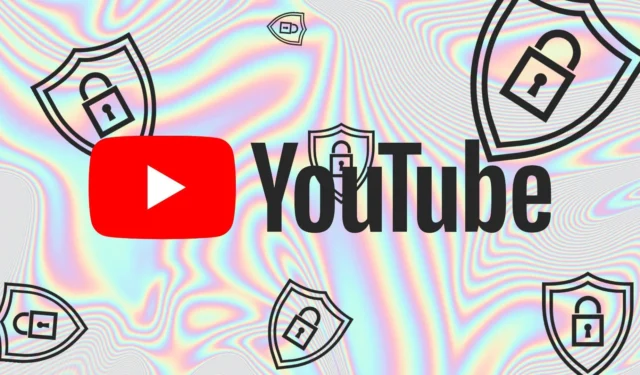
Securing your YouTube channel is more crucial than ever. Its enormous popularity has made it the go-to platform for content creators looking to showcase their videos. Quality material takes time to create, and the last thing you want is for it to be compromised or prohibited owing to insufficient security measures.
Nowadays, security measures are designed to be user-friendly and hence simple to deploy. This article will go over five practical methods for securing your YouTube channel and protecting your content. Whether you’re a new or veteran video provider, it’s essential securing your YouTube channel in 2023.
Top 5 methods for securing your YouTube channel
1) Make a strong password
Using a strong password is an important step in preventing your YouTube channel from being hacked. It must include capital letters, tiny letters, numerals, and special characters. These are some best practices for password creation:
- There should be no names or words in it.
- It should not include any significant dates (date of birth, holidays, etc.)
- It should not include any alphabets or numerals (abcd, 1234, etc.)
The strongest passwords are made out of a completely random set of numbers, letters, and special characters. If you frequently forget your password, you could use a reputable password manager. Additionally, update your password about every three months.
2) Turning on two-factor authentication
After creating a strong password, establishing two-factor authentication is an important step toward securing your YouTube channel. When entering in to a new device, two-factor authentication (or 2FA) requires you to enter a code provided to your phone, email, or 2FA app.
Follow these steps to enable two-factor authentication on your Google account:
- Go to the Google Sign-in and Security page.
- Under the “Signing in to Google” section, select “2-Step Verification.”
- When prompted, enter your Google account password and click the “Get Started” option.
- Enter your phone number and select whether to receive verification codes via text message or phone call.
- Click “Next” after entering the verification code you received on your phone.
- You’ll be asked to enable “Google Authenticator” as your second factor. Pick your favorite option and follow the on-screen instructions to configure it.
That’s all there is to it; your Google account is now protected by two-factor authentication using the Google Authenticator app.
3) Regularly reviewing permissions
If you collaborate with others on your channel, you must restrict access to only those who require it. Instead of granting them full access, you can add them as YouTube editors or managers. If someone no longer need access, you can revoke it at any moment. Follow these procedures to change the permissions on your YouTube channel:
- Sign in to your YouTube account first.
- At the top right corner of the screen, click on your profile image.
- Choose “YouTube Studio” from the drop-down list.
- Choose “Settings” from the left-hand menu.
- Choose “Permissions.”
- Locate the user whose access you want to change and click the three dots to the right of their name.
- From the drop-down menu, choose “Edit.”
- Modify their access level as desired, or click “Remove” to remove their access.
- To save the changes, click the “Save” button.
4) Doing routine security checks

Google has a security checkup tool that automatically informs users to potential security threats. It will assist you in protecting your YouTube channel from potential dangers. To use the Security Checkup tool, go through the following steps:
- Sign in with any web browser to your Google account.
- At the top right corner of the screen, click on your profile image.
- Then, from the drop-down box, choose “Google Account.”
- On the left-hand side of the screen, select the “Security” tab.
- Click the “Security Checkup”button under the “Security”section.
- Follow the on-screen instructions to review your account’s security settings.
- You may be prompted to take extra steps to improve the security of your account based on the results of the Security Checkup (changing your password, enabling two-factor authentication, etc.)
- When you’ve reviewed and addressed any issues, click the “Done” option to finish the security inspection.
5) Employing non-copyrighted content
Using copyright-free content is another strategy to secure your YouTube channel. Everyone should include images, video clips, audio clips, and effects in their YouTube videos. If you utilize copyrighted content accidentally, your videos may be demonetized or deleted, or your channel may suffer a copyright strike.
- When looking for copyright-free content, look to trusted sources such as the Creative Commons website or other sites that provide copyright-free content.
- Check the terms of service. Even if the content is free of copyright, there may be limitations on how you can use it. Before using any information, read and understand the terms of use.
- If the content creator requires attribution, include it in your video description or in the video itself. This is not only a legal necessity, but it also aids in the development of a connection with the content producer.
- Be sure you don’t incorporate any copyrighted material in your videos, even if it’s just a little piece. Before utilizing any content, always check to see if it is copyrighted.
- You may be entitled to utilize copyrighted content under the fair use doctrine if you choose to use it.
You can secure your YouTube channel by following these recommended practices. This tutorial will assist your YouTube channel in preparing for the long term and safeguarding your valuable content.




Leave a Reply ▼